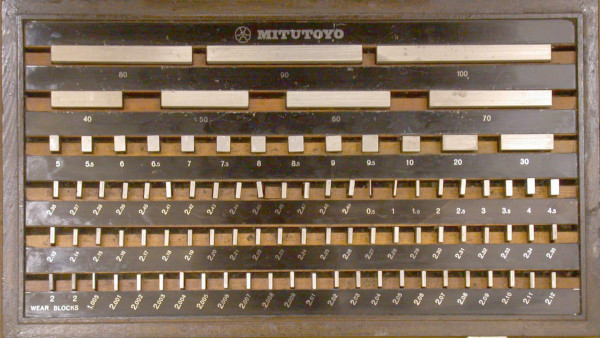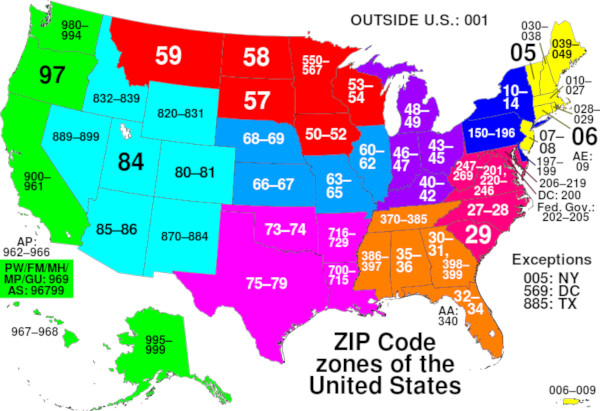July 1 through History: A Day of Rules and Measures
With a limited number of days on the calendar, many events across the broad spectrum of history happen to share a date. Sometimes the pairings are fraught with irony, like when John Adams and Thomas Jefferson died on the same day … which happened to be the Fourth of July. Other times they’re interesting coincidences, such as all of the meaningful events that happened on April 30 over the decades.
July 1st might not be the “biggest” day in history, but it happened to be the landing zone for events that affect your everyday life. In 1959, 1963, and 1984, the first day of July saw changes to numbers and rules that have a bearing on how you measure, how you mail, and how you go to the movies.
July 1, 1959: The Agreement on International Measurements

The definitions for weights and measures typically come from a physical object called a standard. A standard for one pound, for example, would weigh one pound. Disaster struck in 1834 when the Palace of Westminster in England, the home of British Parliament, burned; among the things destroyed by the blaze were the physical standards for weight and length. New versions were made, and in 1855, the
United States adopted that new British ruler for feet and yards.
The next several decades saw updates and additions that were generally agreed upon by the United States, England, and other countries associated with the British Commonwealth. By 1903, American physicist Albert Michelson’s experiments in electromagnetic waves proved that you could set defined lengths using light waves. Over the next few years, the International Bureau of Weights and Measures would accept the light-wave definition of the meter; by 1935, 16 countries had taken on the light-wave inch (25.4 mm) as the “industrial inch” standard.
Things got even more precise as scientists and standards bodies from around the world began to consider atomic measurements. The U.S., the U.K., Australia, Canada, New Zealand, and South Africa agreed upon a specific “international pound” and “international yard” in 1958. The new definitions placed the 3-foot yard as equivalent to .9144 meters, and the pound at .45359237 kilograms. On July 1, 1959, the U.S. National Bureau of Standards (now the National Institute of Standards and Technology) officially approved the system.
Today, only three countries have not adopted the metric system for everyday use: Liberia, Burma, and the United States. The other 192 countries on Earth use it for everything. However, the U.S. does commonly use the metric system in the fields of science, medicine, and a number of other industries (including firearms manufacturing, gemstones, and energy).
July 1, 1963: ZIP Codes Come to America

Introduced on this date in 1963 with the hope of improving mail delivery speed and efficiency, the ZIP (Zone Improvement Plan) code was the brainchild of postal inspector Robert Moon; he proposed a three-digit postal code in 1944. The first digit represents your region of the country (0 is the East Coast, 9 the West Coast), and digits two and three stand for an SCF or “sectional center facility”; that’s the place where mail is sorted for a certain area. The Postal Service added the final two digits to the code to provide more specificity, routing the mail to the proper post office for delivery. A second big change came to the mail on October 1 of that year, when the two-letter state abbreviations were introduced.
ZIP codes got an upgrade in 1983 when the “ZIP+4” debuted. The extra four digits are intended to get very specific, sometimes representing a single building within the area defined by the first five digits. The most famous ZIP code in the United States is likely 90210, the code for Beverly Hills; BH90210, the third TV series to bear the well-known numbers, begins on August 7 on Fox.
July 1, 1984: The MPAA Releases PG-13
The infamous Gremlins kitchen scene (Uploaded to YouTube by Movieclips)
Blame it on the Gremlins; well, Gremlins and Indiana Jones. The Motion Picture Association of America introduced the modern film ratings system in 1968; after a couple of years of tinkering, the system settled on G (General Audiences), PG (Parent Guidance suggested), R (Restricted, no one under 17 admitted without a parent or guardian), and X (no one under 17). In 1984, however, two Steven Spielberg-related films pushed the envelope on violence at the cinema. The Spielberg-directed Indiana Jones and the Temple of Doom showed a beating heart being removed from a man’s chest, while the Spielberg-produced Gremlins featured a number of gross-outs, including the famous kitchen massacre scene. Complaints and controversy arose over the two PG films, and the MPAA’s solution was to introduce a new rating as a middle ground between PG and R. The PG-13 rating represents the idea of “Parents Strongly Cautioned,” meaning that there is likely to be more violence, swearing, or limited nudity than one would expect in a PG film. The first movie to carry the rating was John Milius’s Brat-Pack-vs.-the-Soviet-Union actioner Red Dawn.
Featured image: Shutterstock